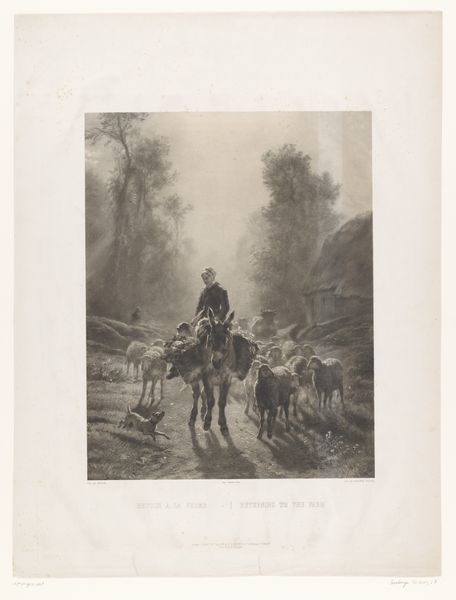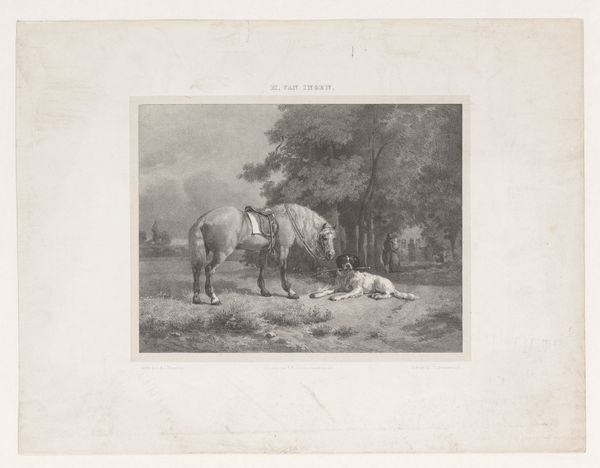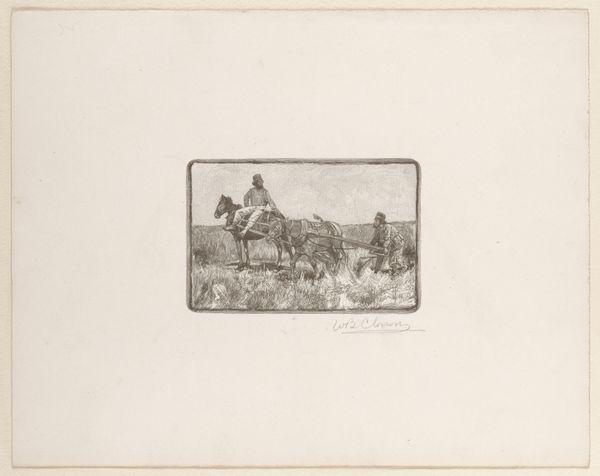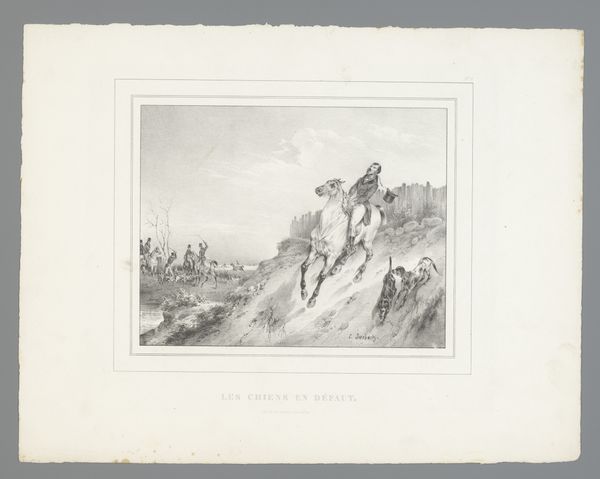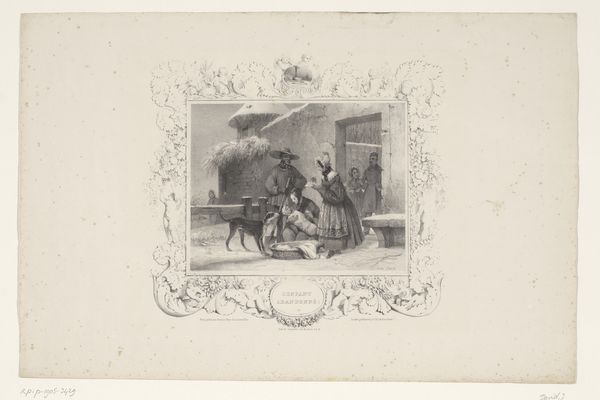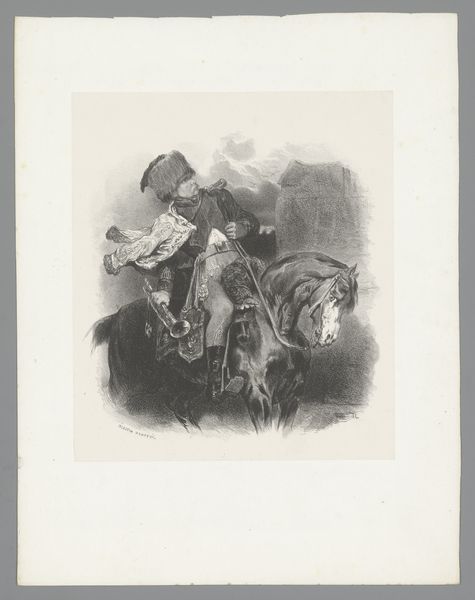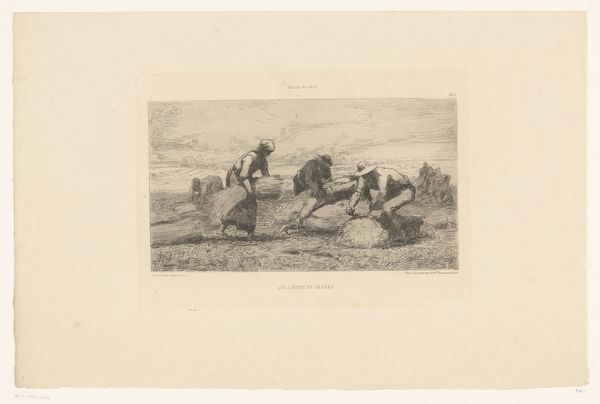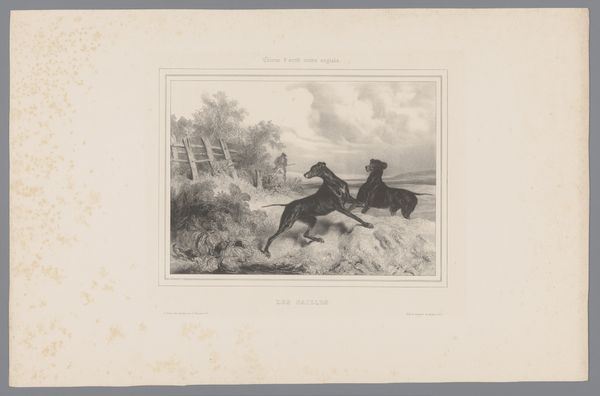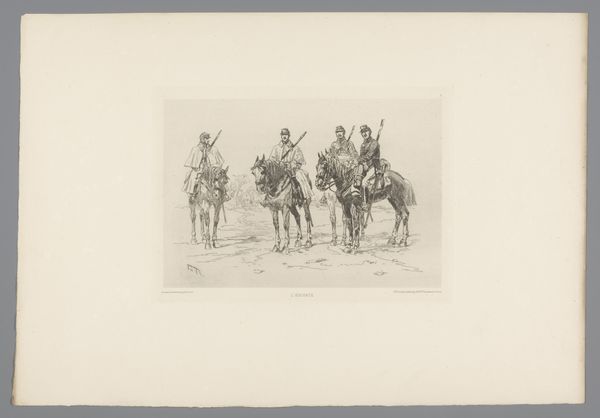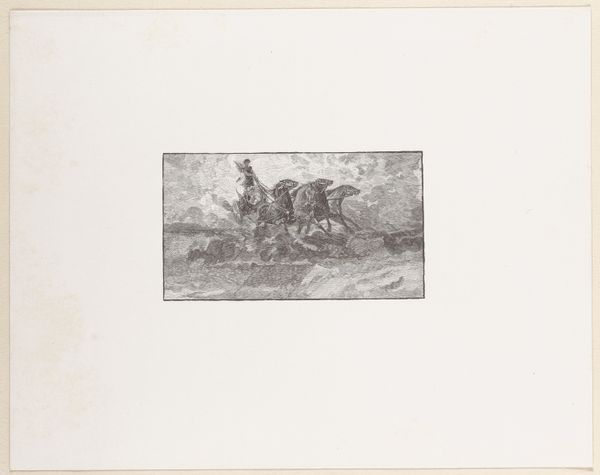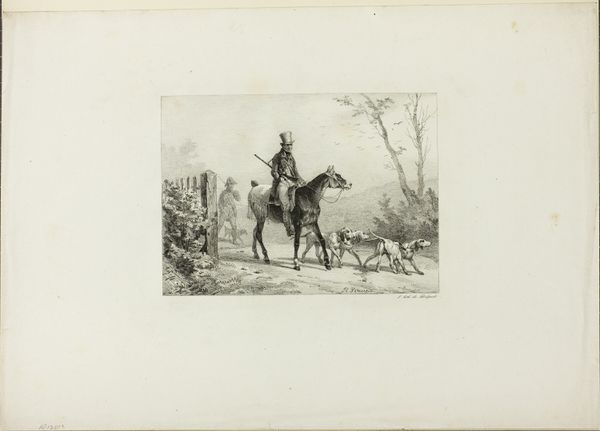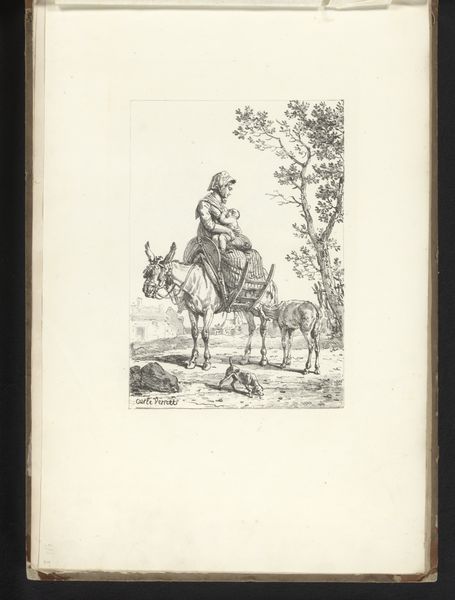
engraving
#
caricature
#
landscape
#
figuration
#
romanticism
#
horse
#
genre-painting
#
engraving
Dimensions: height 482 mm, width 362 mm
Copyright: Rijks Museum: Open Domain
Curator: Let’s explore this engraving from the period between 1829 and 1840. It’s titled “Zittend stelletje in ontspoorde paard-en-wagen,” or, "Sitting couple in a derailed horse-drawn carriage" by Léon Alphonse Noël. Editor: My first thought is about its strange humor. Despite the precarious position, there is a real sense of elegance, with the high contrast enhancing the drama, while everything looks askew. Curator: Indeed. Note how Noël utilizes line and texture to convey a sense of chaotic romanticism. The lines of the carriage tilt precariously, and even the trees in the background seem to mirror that instability. The formal elements certainly support the intended emotional response, don't they? Editor: Absolutely. I see also the deliberate contrast here between the refined couple and the rugged materiality of their circumstance, highlighting a social commentary. Engraving as a process involves significant physical labor, meticulously etching into metal – think about the contrast here between the engraver’s work and the leisurely subject. Curator: Very astute! You draw attention to the art-making itself and its ties to production, labor and skill. Consider the deeper implications, with a couple removed from the means and mode of transport—suggests something is rotten. What kind of romantic vision is that? Editor: It feels very intentional that he's foregrounding labor in such a striking composition that juxtaposes both the social classes and the means by which things are created—or fall apart. Curator: The tilted horizon and dramatic clouds enhance the romantic tone, even as the central figures almost kiss, underscoring this unstable, uneasy mood. It has this formal appeal alongside social discord. Editor: Considering the likely audience for such prints, one has to imagine the impact, and whether it was a deliberate gesture of questioning existing hierarchies and the distribution of labor within them. Curator: So while we see the romantic aesthetic choices typical of the period, a more subversive, challenging commentary underlies its making, use and impact. Editor: Indeed, from process to consumption, a piece like this reveals multiple layers that engage with both art and society.
Comments
No comments
Be the first to comment and join the conversation on the ultimate creative platform.
